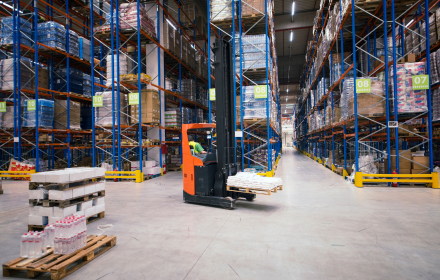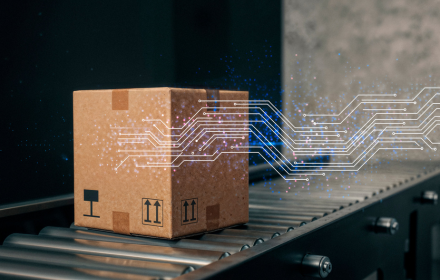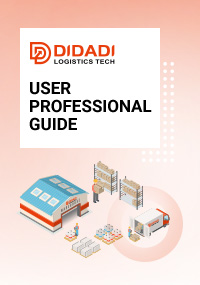Keep Inventory in China and Sell Global: 3PL Strategies for DTC and Amazon FBA Sellers

The rise of global e-commerce has changed the way brands manage their supply chains. From small direct-to-consumer (DTC) startups to large Amazon FBA businesses, every seller faces the same critical challenge: how to manage inventory efficiently while meeting the expectations of global customers.
Traditionally, many sellers believed they had to move their entire inventory to warehouses in the U.S., Europe, or other target markets. While this approach shortens delivery times, it also creates higher overhead costs, risks of overstocking in the wrong locations, and complex logistics.
Today, a new model is gaining momentum: keeping inventory in China and selling globally. By combining this approach with professional third-party logistics (3PL) services, sellers can reduce costs, improve flexibility, and adapt faster to shifting consumer demand.
1. Lower Storage and Operating Costs
Warehousing costs in developed markets are notoriously high. In the U.S., Amazon FBA storage fees can range from $0.87 to $2.40 per cubic foot per month, depending on season and category. In Europe, the cost is often higher due to limited space and labor expenses.
In contrast, warehousing in China typically costs 40–70% less, especially when managed by export-focused 3PLs. This difference can save thousands of dollars monthly, especially for sellers with bulky or seasonal products.
2. Flexibility in Global Distribution
Consumer demand is rarely predictable. A product that sells strongly in the U.S. this month might suddenly gain traction in the Middle East or Southeast Asia next month. If inventory is locked in expensive warehouses abroad, sellers lose flexibility.
Keeping inventory in China allows sellers to ship directly to whichever country needs stock at that moment. This minimizes financial risk and supports global expansion without overcommitting to one region.
3. Easier Supplier Coordination
China remains the world’s largest manufacturing hub. Many products are sourced from concentrated industrial clusters—Shenzhen for electronics, Yiwu for small commodities, Guangzhou for fashion, Hangzhou for home goods, etc.
Storing inventory close to suppliers enables easier replenishment, product inspection, and consolidation. Instead of sending multiple small shipments overseas, sellers can consolidate goods in a China-based warehouse and send bulk shipments, reducing per-unit logistics costs.
4. Dual B2B and B2C Fulfillment Options
When inventory is in China, sellers can serve both business and consumer markets. For example:
Amazon FBA shipments: Bulk orders can be palletized and shipped to Amazon warehouses worldwide.
DTC orders: Individual orders can be packed and shipped directly to international customers via express couriers or postal services.
This dual approach allows sellers to run multiple sales channels with one inventory base.
Third-party logistics (3PL) providers are the backbone of the “keep inventory in China” model. A professional 3PL does much more than simply store products—it acts as an extension of the seller's operations team.
Key services include:
Warehousing and inventory tracking – digital systems to monitor stock in real time.
Pick, pack, and ship services – fast fulfillment of international DTC orders.
Amazon FBA prep – product labeling, carton consolidation, palletization, and compliance checks.
Freight forwarding – arranging sea, air, or rail shipping to global destinations.
Customs clearance – ensuring products comply with local regulations to avoid delays.
Returns management – handling product returns and exchanges efficiently.
For global sellers, partnering with the right 3PL in China means being able to scale without the burden of running complex logistics operations.
For direct-to-consumer brands, speed and adaptability are critical. Unlike traditional wholesale businesses, DTC brands rely on building strong customer relationships, testing new products, and expanding across markets quickly.
By keeping inventory in China:
Market testing becomes easier. A brand can launch in Southeast Asia, North America, and Europe simultaneously without moving all inventory into each region.
Overheads remain low. Instead of committing to costly warehouses in every country, sellers can manage everything centrally in China.
Product updates are faster. If a brand changes packaging or improves a product, it can be updated at the 3PL warehouse before shipping abroad.
Example: A DTC fitness brand manufacturing in Fujian could keep inventory in a Xiamen warehouse, shipping bulk orders to Amazon U.S. while fulfilling DTC parcels to Australia and Europe directly. This approach keeps operations lean while supporting multiple markets.
Amazon is one of the most competitive platforms in e-commerce, but it comes with strict rules. FBA sellers often face challenges like:
Inventory limits: Amazon restricts how much stock sellers can send in.
High storage fees: Long-term storage fees in FBA warehouses are expensive.
Prep requirements: Incorrect labeling or packaging can result in rejected shipments.
By keeping inventory in China, Amazon sellers gain more control:
Pre-stock goods in China and only send batches when needed.
Avoid stockouts by keeping a buffer warehouse in China ready to replenish quickly.
Stay compliant by using 3PL prep services to meet Amazon’s requirements.
Save on logistics costs by consolidating shipments rather than sending multiple small parcels.
This hybrid model—China storage plus FBA replenishment—helps sellers stay profitable while scaling.
For sellers looking to implement this model, finding a reliable logistics partner is key. DIDADI Logistics Tech specializes in helping global brands and Amazon sellers keep inventory in China and sell worldwide.
Here’s how DIDADI adds value:
China-based warehousing – cost-efficient, flexible storage near major ports and supplier hubs.
Amazon FBA prep services – labeling, packaging, palletizing, compliance checks, and shipment consolidation.
DTC order fulfillment – international shipping for small parcels, with tracking and faster delivery options.
Global freight solutions – sea freight for bulk orders, air freight for urgent replenishments, and rail freight to Europe.
Customs and compliance support – smooth clearance and regulatory guidance to avoid shipment delays.
Scalability – whether you’re a small DTC startup or a mature FBA seller, services scale with your business growth.
By combining warehousing, fulfillment, and global shipping under one platform, DIDADI Logistics reduces complexity and empowers sellers to expand confidently.
As cross-border e-commerce continues to grow, the “inventory in China + global fulfillment” model will become more mainstream. Sellers can:
Launch new products with lower risk.
Explore new markets faster.
Reduce logistics costs significantly.
Focus on branding and customer experience instead of supply chain struggles.
The key is choosing a logistics partner that understands both the global landscape and China’s supply chain ecosystem.
Managing inventory effectively is one of the biggest challenges for DTC and Amazon FBA sellers. While storing products close to customers seems logical, the costs and risks can be overwhelming.
By keeping inventory in China and selling globally—with the support of experienced 3PL providers like DIDADI Logistics—sellers gain flexibility, save costs, and stay ready for global opportunities.
In a competitive e-commerce world, this model is no longer just an alternative—it’s becoming a strategic advantage.
Recommended Reading















